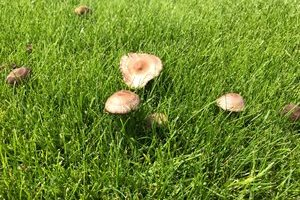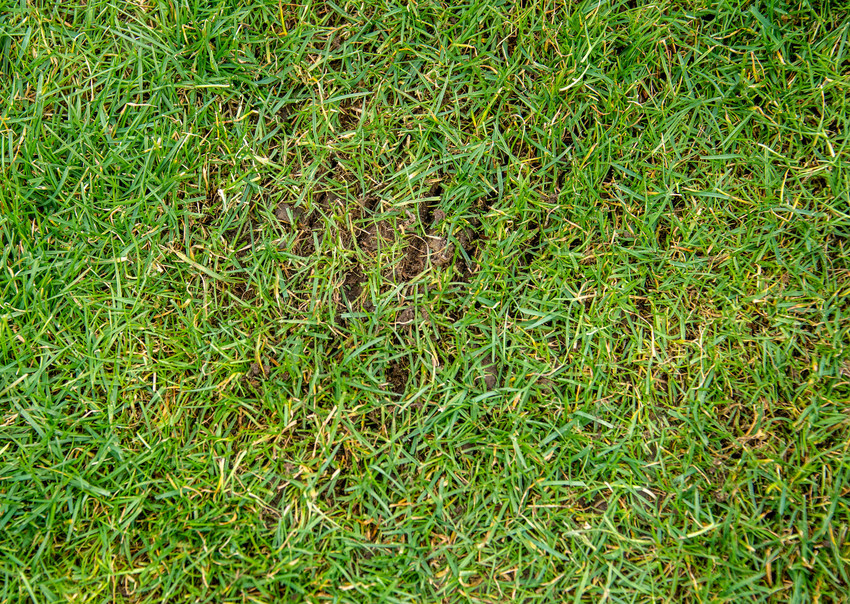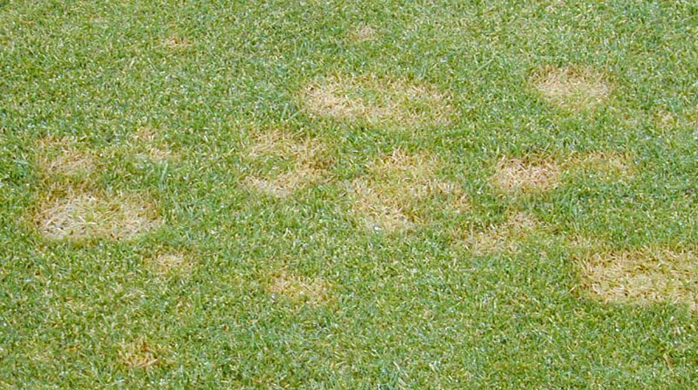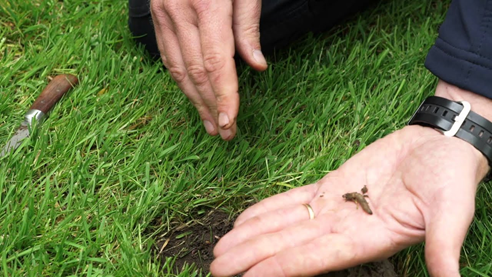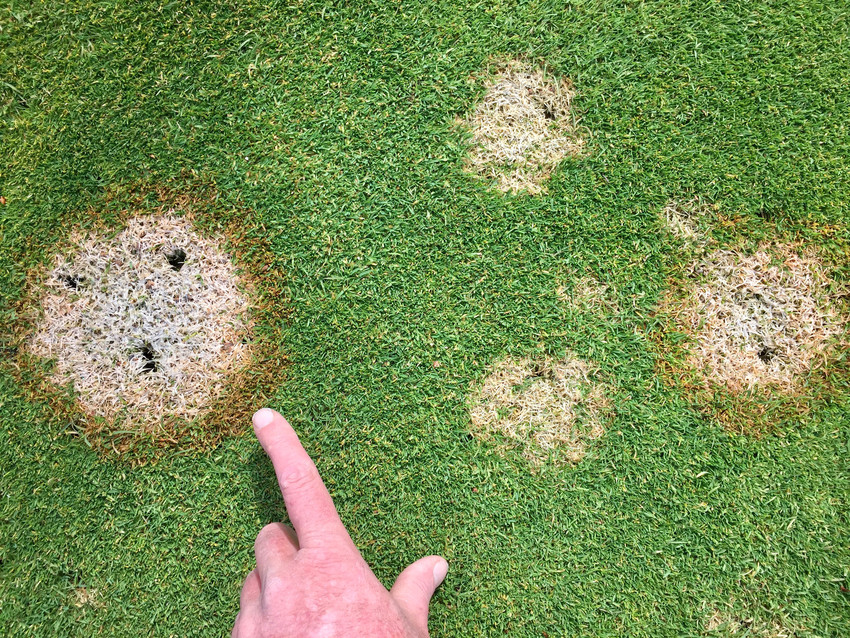Discolouration
There are a number of reasons why your lawn may look tired or in poor condition. Below are a few examples and some quick remedies. When in doubt though give us a call, if we can advise you we would be more than happy to.
– Animal Urine
This can cause brown circular patches with an outer ring that appears very bright in colour. This is most likely caused by dogs of other pets who use the lawn.
You can reduce this by irrigating the area after your pet has urinated. In some cases where the lawn has died off, digging the area out and patching with new turf can be an option.
– Tree Roots
Often running along or under tree/hedge canopy. Caused by the fight between the roots and the grass for moisture or sunlight.
These effects can be reduced by aerating the soil or by watering at the times of the year when worst affected.
– Soil Compaction
Brown areas appear where the lawn receives a lot of foot traffic. When it does rainwater sits on the top and struggles to drain away. This is due to compaction and prevents the roots getting the necessary water.
Aerating by spiking the lawn in these areas will help relieve the compaction and increase water drainage.
– Excessive Thatch
If your lawn has brown areas and feels a little spongy it is probably because there is a build-up of thatch. This can prevent the water draining through to the roots as well as normal. It is also a concern as it can promote the chance of disease.
Rake or scarify the lawn to remove as much thatch as possible. Spiking the lawn can also help with the drainage.

